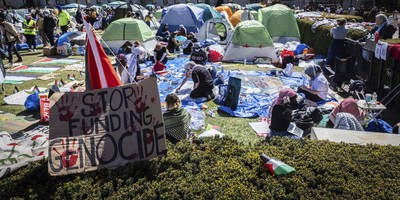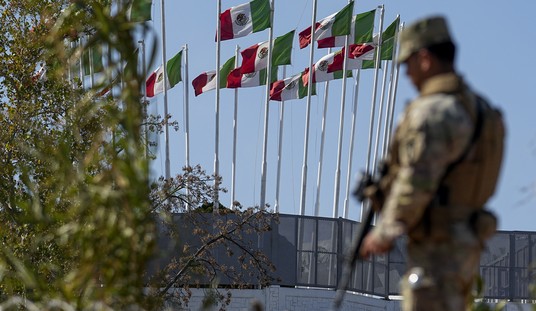The Aug. 2, 1990, Iraqi invasion of Kuwait stunned Washington and the world. Within days, the Bush administration (George H. W. Bush) deployed American military units to thwart further assaults by Saddam Hussein's Republican Guard Corps and forge an extraordinary political coalition dedicated to liberating Kuwait. Operation Desert Shield had begun.
Desert Shield is not over. A great struggle for the terms of modernity in the Middle East continues and will do so for at least another three to four decades.
Desert Shield connects to Desert Storm. The decision to not topple Saddam led to the murders of tens (if not hundreds) of thousands of Iraqi Shia Arabs and Kurds who rebelled after Desert Storm "cut off and killed" Saddam's military forces in Kuwait.
That led to "dual containment" of Saddam's Iraq and the Ayatollah Khomeini's Islamic Revolution in Iran. U.S. forces in Saudi Arabia (enforcing U.N. Iraqi sanctions) gave Osama bin Laden's al-Qaida a militant recruiting tool: The American infidels threatened Moslem holy sites in Saudi Arabia, so destroy the Saudi regime and kill Americans. Sept. 11 killed Americans and ignited the Global War on Terror.
Pinpointing Aug. 2 as the beginning of this struggle, though narratively convenient, obscures a larger context. U.S. Central Command was the primary military instrument the coalition used to wage the Gulf War. Its roots lay in the Carter administration's Rapid Deployment Force (RDF). RDF had several predecessors, including a plan named Armor "C" Package -- the "sea-borne" delivery of U.S. tank units to "somewhere in southwest Asia."
Recommended
The RDF was built to respond to an attack by the Soviet dictatorship on the Persian Gulf. As 1990 began, the U.S.S.R. still existed, but the Cold War had ebbed. In July 1990, a month before Saddam's invasion, the West German mark became legal tender in East Germany; the red threat had drowned in red ink. Liberal democracies chalked up a slow but big win in Europe.
Saddam saw himself as the successor to the Soviet Union. He styled himself as the next "anti-American" option, but in reality he simply offered another anachronistic dictatorship of elites built with tyranny's usual tools: murder, ethnic division, economic corruption, denial of free expression and a brutally enforced collective ideology. He was also into genuine imperialist warfare -- he coveted Kuwait's oil, gold kiosks and Mercedes dealerships.
A key artifact is Saddam's speech delivered in Amman, Jordan, on Feb. 24, 1990. Hallmarked by bombast, Baath Party rhetoric and macho posturing, the speech provided a window into Saddam's strategic assessments prior to the Kuwait invasion. In retrospect, it may have been much more: at the least a rhetorical test of American reaction, at the outside a violent megalomaniac's warning that he was a global leader and intended to go to war to prove it.
Saddam began with the usual "pan-Arab issues," the "loss of Palestine" among them. He then sketched his vision of recent history. After World War II, France and Britain "declined." Two superpowers arose, the U.S. and U.S.S.R., and "global policy continued on the basis of the existence of two poles that balanced in terms of force."
"And suddenly the situation," Saddam said, "changed in a dramatic way." The Cold War ended. Saddam then proceeded with a rambling proposition that America was "fatigued" and would fade, but "throughout the next five years," the U.S. would be unrestricted.
The U.S., in Saddam's view, was strong but weak, without staying power. The speech implied defeating the U.S. entailed scraping the scar of Vietnam and threatening massive U.S. casualties. "Fatigue" and domestic self-recrimination would stall U.S. power. One crucial line stands out: "The big," Saddam said, "does not become big nor does the great earn such a description unless he is in the arena of comparison or fighting with someone else on a different level." (Translation: If a minor-leaguer wants to move up, he takes on the majors.)
Saddam's assessment differs little from the 1950s Soviet threat, "We will bury you." Osama bin Laden's "weak horse, strong horse" metaphor echoes Moscow and Saddam. Sept. 11 was bin Laden's bid to "fight on a different level." At their miserable, daily, functional level, little distinguishes Saddam's Iraq from Iran's mullocracy, a Soviet dictatorship or an al-Qaida caliphate. Whether atheist or theocrat, the routine is murder, corruption and enforced collective ideology. This commonality, and shared anti-Americanism, are two reasons the world's so-called progressive leftists coddle al-Qaida and the Taliban.
World War I's aftermath created the conditions for fascism, communism and, yes, al-Qaida-brand terror religion (Qutbism, is a name for it). In various guises, America has been at war with totalitarianism since at least the 1930s. Aug. 2, 1990, was a dangerous moment in that war. And the war continues.






















Join the conversation as a VIP Member